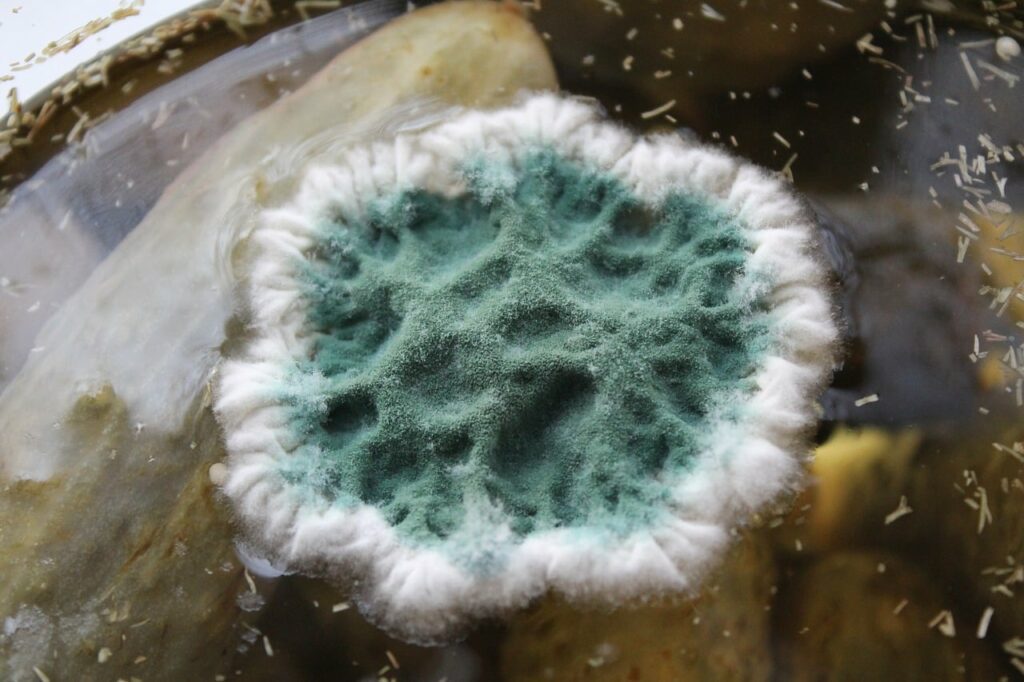As a certified indoor air quality professional, I’ve encountered numerous homes where residents experience various health symptoms attributed to mold exposure. According to the CDC, “The most common effects are allergic responses from breathing mold spores.”
For most of us, airborne allergens such as pollen, dust, pet dander, mold spores, and other compounds are just part of the natural environment. However, there are individuals whose hypersensitivity can turn these seemingly benign particles into serious health threats.

One particular catalyst in the proliferation of mold is the presence of moisture – and this does not necessarily mean overt, visible water problems. Various species of mold, including easily airborne and allergenic types like Aspergillus and Penicillium, can thrive in environments with high relative humidity, without the need for liquid water.
Decoding Relative Humidity
Relative humidity (RH) denotes the amount of water vapor present in the air at a specific temperature, relative to the maximum amount that the air could hold at the same temperature.
For example, air at 60% RH means it is holding 60% of the maximum amount of water vapor it could at that temperature, with room to accommodate 40% more before reaching saturation (100% RH). As the temperature of this air decreases, its capacity to hold water vapor diminishes. As such, relative humidity increases as the air cools down. When 100% RH is attained, water vapor begins to condense onto cooler surfaces.
What Causes High Relative Humidity Indoors?
Indoor spaces are not uniformly warm or cool. Hence, the relative humidity fluctuates across the area, increasing in cooler spots.
Basements are a prime example of this. They’re built below grade, so they’re naturally cooler due to the “cave temperature” effect, usually around 55 degrees Fahrenheit. As the air encounters these cooler surfaces, it cools down, which can increase the relative humidity.
High relative humidity also arises when the windows are open on days with high outdoor RH, and neither heating nor air conditioning is operating.
Where Does Mold Grow Due to High Relative Humidity?
In unfinished basements, mold thrives on dust-coated foundation walls, stored items, and built-in benches or shelves. In most cases, mold growth is prevalent on the lower sections of the walls and surfaces in contact with those walls or the basement floor.
For finished basements, the walls can still be cooler than upstairs, leading to possible mold growth. Mold may also lurk in the basement carpeting, feeding off trapped dust. Even basement baseboard heating convectors and radiators aren’t immune, with mold growing on dusty surfaces.
In homes built on concrete slabs without a basement, rooms partially below grade can be susceptible to mold growth, especially in carpets near the perimeter walls.
Interestingly, houses with intermittent occupancy, such as vacation homes or foreclosed properties, can also experience mold issues due to inadequate humidity control.
How to Control Relative Humidity
As stated by the U.S. Environmental Protection Agency, “Humidity is the dominating factor, and control strategies should involve decreasing the moisture content of the indoor air.”
For the humid season, typically from mid-April to mid-October, it’s crucial to dehumidify your finished or unfinished basement and any partially below-grade rooms. Employ a dehumidifier with sufficient capacity for the space and monitor the RH with a thermo-hygrometer. If the RH surpasses 50% in an unfinished basement or 65% in finished rooms, increase dehumidification.
Air conditioning also helps control RH, but it’s important to monitor levels and supplement with a portable dehumidifier or central dehumidification as needed. In winter, dehumidifiers can be turned off, but any finished basement or partially below-grade living space should consistently be heated, with a thermostat set at a minimum of 58 degrees Fahrenheit.
Preserve Your Health
For individuals considering moving into a foreclosed property or families with allergy or asthma sufferers, it might be prudent to enlist an indoor air quality professional to check for possible mold presence.
Avoid turning down the heat to 45 degrees Fahrenheit when leaving your vacation home for the winter holidays. Similarly, don’t minimize the heat in your finished basement playroom or family room when not in use. If you live in a hot and humid climate, remember to air condition or dehumidify your home, making sure the relative humidity doesn’t rise above 65 to 70%.
Maintaining healthy indoor humidity levels and thereby preventing mold growth can incur some additional costs, but it’s a small price to pay for the protection of your health and the well-being of your loved ones.
Disclaimer: The information in this article is meant for educational purposes only. It should not replace professional medical advice, diagnosis, or treatment. Please consult a healthcare provider if you have any health concerns.

Jay
Jay is a health and wellness enthusiast with expertise in water quality and nutrition. As a knowledgeable advocate for holistic well-being, Jay successfully manages Type 2 Diabetes through informed lifestyle choices. Committed to sharing reliable and authoritative insights, Jay combines firsthand experience with a passion for enhancing health."
